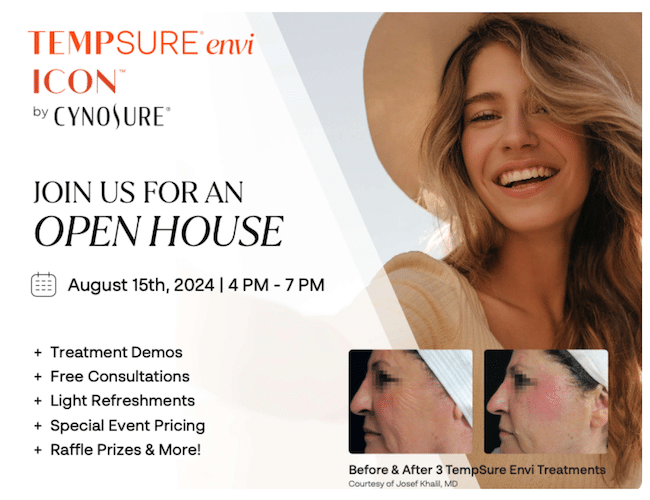Diabetic Retinopathy
What is Diabetic Retinopathy?
People with Type 1 or Type 2 Diabetes Mellitus can have an eye disease called diabetic retinopathy, which occurs when high blood sugar levels bring about damage to blood vessels in the retina. Retina blood vessels can swell and leak, or they can close, stopping blood from passing through. Sometimes, abnormal new blood vessels grow on the retina. All of these changes can steal your vision and lead to blindness. The longer you have diabetes and the less controlled your blood sugar is, the more likely you are to develop this eye complication. More than 40% of diabetics in the United States have some stage of diabetic retinopathy.
What are the symptoms of Diabetic Retinopathy?
The initial stages of diabetic retinopathy may not have any symptoms. In later stages, some people notice changes in their vision, like trouble reading or seeing faraway objects. Other symptoms may include blurred vision, impaired color vision, and poor night vision. These changes may come and go.
In the advanced stages of the disease, blood vessels in the retina start to bleed into the vitreous (gel-like fluid that fills your eye). If this happens, you may see dark, floating spots or streaks that look like cobwebs. There may be patches or streaks that block your vision. It’s important to get treatment from an eye doctor right away. Without treatment, the bleeding can happen again, get worse, or cause scarring. In some cases, you may experience a sudden and total loss of vision.
How is Diabetic Retinopathy Diagnosed?
Our Nashville Optometrist has several tools at their disposal to help diagnose eye diseases, such as diabetic retinopathy, cataracts, glaucoma, and more. The first step is scheduling an appointment with our Nashville eye doctor. Then, utilizing modern Vision Care Technology, we’re move through a series of steps during your eye exam.
Dilation. Drops will be put in your eye to dilate your pupil. This allows your eye doctor to look through a special lens to see the inside of your eye.
Retinal exam using Zeiss Clarus technology. The Clarus enables your Optometrist to see as much of the retina as possible, including the peripheral areas where the first signs of diabetic retinopathy are most likely to occur. The scan is non-invasive and provides cross-sectional images of the important structures of your retina. This makes it possible for your eye doctor to see the subtlest, earliest changes associated with Diabetic Retinopathy.
Optical coherence tomography (OCT). This noninvasive imaging test displays detailed cross-sections of the retina. It images the microvasculature of the retina and identifies areas of thinning, thickening, or swelling. This helps the optometrist to find and measure swelling of the Macula. The OCT is also used to help monitor how the retina responds to diabetic retinopathy treatments. OCT angiography is a newer technique and does not need dye to look at the blood vessels.
Flourescein angiography helps your eye doctor see what is taking place with the blood vessels in your retina. Fluorescein angiography uses a yellow dye called fluorescein, which is injected into a vein (usually in your arm). The dye travels through your blood vessels. A special camera takes photos of the retina as the dye travels throughout its blood vessels. This test shows if any blood vessels are blocked or leaking fluid. It also shows if any abnormal blood vessels are growing.
How is Diabetic Retinopathy Treated?
When the damage has not progressed to the point where new, abnormal blood vessels are growing to try to replace damaged ones, then we call the diabetic damage, “nonproliferative diabetic retinopathy (NPDR).” If you have mild or moderate NPDR, you might not need treatment right away. However, our Nashville eye doctor will closely monitor your eyes to determine when you might need treatment. For an eye exam, call Music City Optical or schedule your appointment online.
If you have proliferative diabetic retinopathy or macular edema, you’ll need rapid treatment by our optometrist in Nashville. Depending on the specific problems with your retina, options might include:
- Injecting medications into the eye. These medications, called vascular endothelial growth factor inhibitors, are injected into the vitreous of the eye. They help stop the growth of new blood vessels and decrease fluid buildup.
Two drugs are approved by the U.S. Food & Drug Administration (FDA) for the treatment of diabetic macular edema — ranibizumab (Lucentis) and aflibercept (Eylea). A third drug, bevacizumab (Avastin), can be used off-label for the treatment of diabetic macular edema.
- Photocoagulation. This laser treatment, also known as focal laser treatment, can stop or slow the leakage of blood and fluid in the eye. During the procedure, leaks from abnormal blood vessels are treated with laser burns.
- Panretinal photocoagulation. This laser treatment, also known as scatter laser treatment, can shrink the abnormal blood vessels. During the procedure, the areas of the retina away from the macula are treated with scattered laser burns. The burns cause the abnormal new blood vessels to shrink and scar.
- Vitrectomy. This procedure uses a tiny incision in your eye to remove blood from the middle of the eye (vitreous) as well as scar tissue that’s tugging on the retina.
While treatment can slow or stop the progression of diabetic retinopathy, it’s not a cure. Because diabetes is a lifelong condition, future retinal damage and vision loss are still possible. Even after treatment for diabetic retinopathy, you’ll need regular eye exams to monitor your condition. At some point, you might need additional treatment.
Lifestyle and Nutrition
Reducing oxidative stress is very important to slow the progression of the disease. In the mitochondria and cell membranes, ischemic injury and end-organ damage to the retina decrease. Patients with Diabetic Retinopathy have high incidences of deficiencies of crucial vitamins, minerals, and related compounds, which also lead to the elevation of Homocysteine (Hcy) and oxidative stress. Optimal combinations of vitamins B1, B2, B6, L-methylfolate, methylcobalamin (B12), C, D, natural vitamin E complex, lutein, zeaxanthin, alpha-lipoic acid, and N-acetylcysteine are identified for protecting the retina and choroid. Your eye doctor must monitor your progress.
Lutein and Zeaxanthin are water-soluble plant-based carotenoids that readily cross the blood-brain and blood-retina barriers. They are essential for vision. Concentrated in the macula lutea, they act as powerful antioxidants, stabilizing cell membranes and protecting from oxidative stress. They are believed to protect against age-related macular degeneration and Diabetic Retinopathy.
Recommended nutrients and foods for people with diabetic retinopathy include:
- Raw Fruits and Vegetables: Fresh fruits and vegetables are the best sources of vitamins and nutrients. Foods rich in lutein and zeaxanthin are beneficial for protecting your eyesight and are known to have antioxidant properties. These nutrients are richly found in green leafy vegetables such as spinach, kale and turnip greens; highly pigmented vegetables such as yellow and orange vegetables like citrus fruits, corn, pumpkin, and carrots. Garlic and strawberries are also beneficial for managing diabetes
- Vitamin A: Vitamin A helps protect the surface of the eyes and is beneficial for night vision. This vitamin can be found in carrots, sweet potatoes, spinach, kale and cantaloupe. Vitamin A supplements are also available in the market, which can help improve eye health and slow down the progression of diabetic retinopathy.
- Plant-based proteins, such as beans, pea protein, and quinoa: High protein-based diets are known to decrease the levels of cholesterol and blood sugar in the body, proving to be an excellent source of fiber, vitamins, and other nutrients.
Other beneficial foods for people with diabetic retinopathy include:
- Nuts such as almonds, cashews, hazelnuts, pecans, walnuts, and pistachios
- Fatty fish and other seafood
- Eggs
- Seeds such as fenugreek seeds, chia seeds, and flaxseeds
- Low-fat yogur,t such as Greek yogurt
- Natural sources of vegetable fats and oil,s such as olive oil, coconut oil, and grapeseed oil
- Foods rich in Omega-3 fatty acids
- Unsweetened beverages and green tea
- Cinnamon
- Apple Cider vinegar


